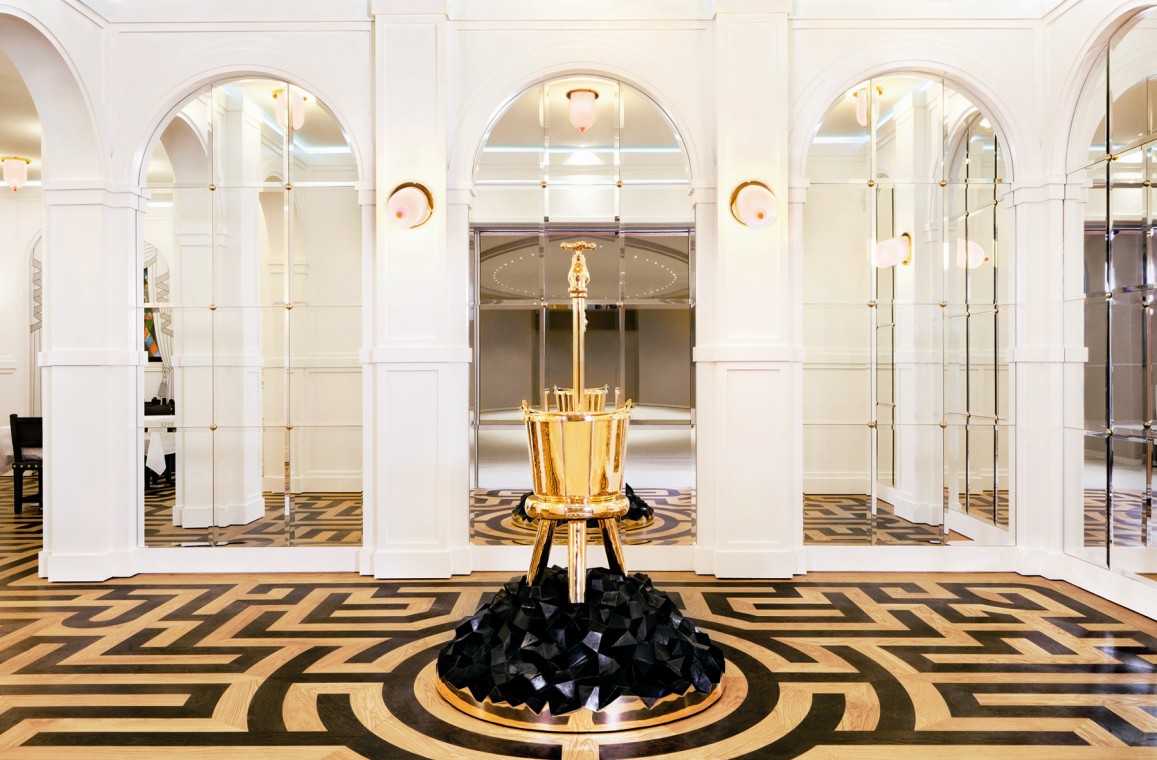After a renovation project which took over 8 months, the Groninger Museum reopened its doors to the public on Sunday 19 December 2010. The entire building has regained its original lustre and and its colours have been fully restored. Several rooms have been thoroughly renovated by the top designers Maarten Baas, Studio Job and Jaime Hayon. They designed, respectively, the Mendini Restaurant, the Job Lounge and the Info Center, the ultramodern digital visitors’ information centre.
Total cost of the operation: nearly 6 million Euros.
Interior
The Groninger Museum can hold its own with other top museums in the Netherlands and Western Europe. To hold this position requires constant innovation and improvement. As a starting point for their spectacular new design of the reception hall Job Lounge, Studio Job took the typical 19th-century private gentlemen’s clubs, frequented by their characteristic members, all smoking and wearing top hats. The Info Center, the new visitors’ information centre, was designed by the young Spanish artist Jaime Hayon, whose work has featured worldwide in the major art and design publications. The Mendini Restaurant on the museum’s premises was refurnished by Maarten Baas, who derived his inspiration from his Clay collection. The furniture objects in this collection have a metal frame and are made of industrial clay. Baas designed a series of new Clay models especially for the Mendini Restaurant. They are entirely handmade.
Exterior
During the revitalization project, the museum’s exterior underwent major repairs. The golden tower has regained its original splendour and the colours of the pavilions have been freshened up. The new tiles on the exterior of the Mendini Pavilion were designed by Alessandro Mendini himself. These durable ceramic tiles were made by the world-renowned ceramics factory Koninklijke Tichelaar Makkum. After the operation, the whole building radiates a new, fresh charisma.
GM collector
A completely new feature is the Groninger Museum Collector, a system which enables visitors to collect their own information about the works of art on display by means of a key ring. This new, interactive product was specially designed and developed for the new exhibition The Unknown Russia – Oriental Painting Art 1850-1920 by IJsfontein (Amsterdam).
Work of art
The Groninger Museum as such is not merely a building that accommodates art exhibitions; it is a piece of art in its own right. It functions as a landmark and is, therefore, just as important to Groningen as the Dom Tower is to Utrecht, or the Eiffel Tower to Paris. The museum building, being a monumental example of postmodern architecture in itself, is the most precious and best-known piece of the Groninger Museum’s art collection.




























